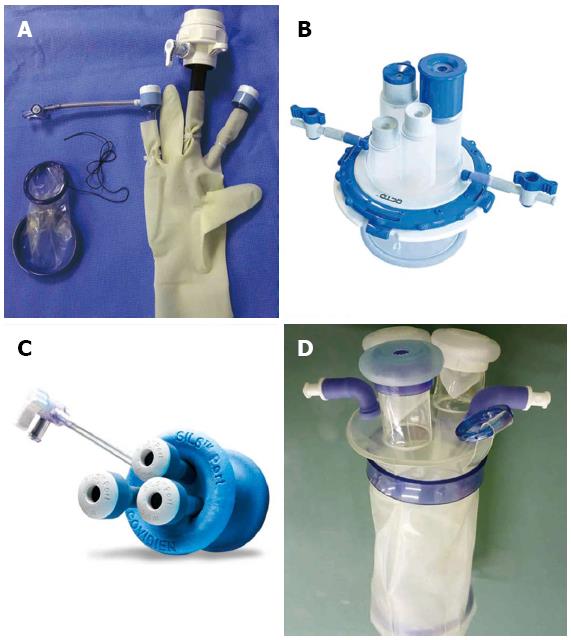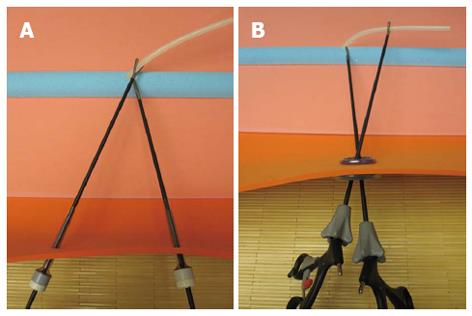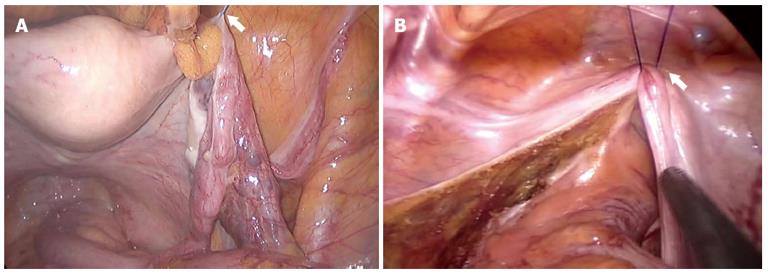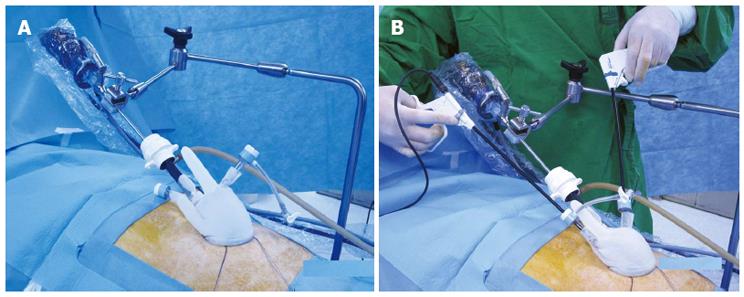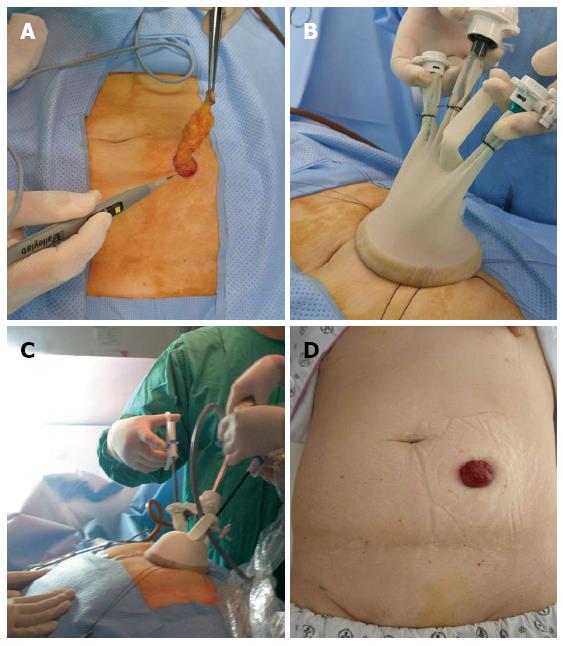Copyright
©2014 Baishideng Publishing Group Co.
World J Gastroenterol. Jan 28, 2014; 20(4): 997-1004
Published online Jan 28, 2014. doi: 10.3748/wjg.v20.i4.997
Published online Jan 28, 2014. doi: 10.3748/wjg.v20.i4.997
Figure 1 Ports designed for single-port laparoscopic surgery.
A: Materials for making homemade glove port (two-piece, terminal type); B: OCTO port (Dalim medical Co., South Korea) (two-piece, terminal type); C: Single incision laparoscopic surgery port (Covidien, United States) (one-piece, preoccupied type); D: Commercial glove port (Sejong medical Co., South Korea) (one-piece, terminal type).
Figure 2 Concept of triangulation vs inverse triangulation.
Triangulation in multiport laparoscopic surgery allows traction on tissues to improve dissection along anatomical planes (A). In inverse triangulation of single-port laparoscopic surgery, the two instrumental ends do not encounter, but assist each other by creating tension (B). Therefore, the operation is carried out with the two instruments crossed-over.
Figure 3 Hanging suture.
To facilitate operative field during total mesorectal excision, the uterus in female (A) or the peritoneal fold in male (B) were elevated by placing an intracorporeal stitch through the low abdominal wall.
Figure 4 Transluminal traction.
A PPH (procedure for Prolapsed and Hemorrhoid Endo-Surgery, Ethicon, United States) was utilized to support the colorectum during dissection and to facilitate dissection by shifting the colorectum’s location as well.
Figure 5 Laparoscopic instrument holder.
An installation of a laparoscopic instrument holder in operation bed (A). Application of a laparoscopic instrument holder during single-port laparoscopic surgery (B).
Figure 6 Umbilicus-sparing single-port laparoscopic surgery.
After making a incision for single-port to the predetermined enterostomy site (A), a single-port was inserted (B), and operation was accomplished through the enterostomy site (C). Postoperatively, no scar, except for enterostomy, remained (D).
- Citation: Kim SJ, Choi BJ, Lee SC. Overview of single-port laparoscopic surgery for colorectal cancers: Past, present, and the future. World J Gastroenterol 2014; 20(4): 997-1004
- URL: https://www.wjgnet.com/1007-9327/full/v20/i4/997.htm
- DOI: https://dx.doi.org/10.3748/wjg.v20.i4.997









